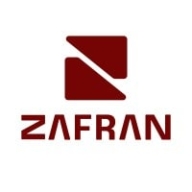


Microsoft Defender for Cloud and Microsoft Defender Vulnerability Management compete in the cybersecurity industry, focusing on security posture and vulnerability management, respectively. Microsoft Defender for Cloud is advantageous due to its integration capabilities and the unified management of security operations within Microsoft ecosystems.
Features: Microsoft Defender for Cloud offers comprehensive visibility into an organization's security posture with seamless integration with other Microsoft products and a unified overview of the security landscape. It enhances security operations through AI-driven alerts and recommendations. Microsoft Defender Vulnerability Management stands out with its effective vulnerability assessment capabilities and detailed compliance reporting, facilitating regulatory standards maintenance.
Room for Improvement: Microsoft Defender for Cloud users have indicated a need for improved response times for alerts and streamlined recommendations accommodating external MFA solutions like Okta. The customization capability needs enhancement, particularly in exemption handling and comments on security incidents. For Microsoft Defender Vulnerability Management, users seek faster portal refresh rates, precise vulnerability identification, and better real-time responsiveness and correlation between findings.
Ease of Deployment and Customer Service: Microsoft Defender for Cloud is predominantly deployed in public cloud environments, integrating smoothly within the Azure ecosystem, though users report varied experiences with premium support quality. Microsoft Defender Vulnerability Management is versatile, deployed across public, private, and hybrid clouds, but customer service experiences similarly vary, with reports of slower response and issue resolution times.
Pricing and ROI: Microsoft Defender for Cloud generally has mid to high pricing, with positive ROI due to advanced security features and Microsoft suite integration, justifying costs for many users. The comprehensive security coverage further validates the expenditure. Microsoft Defender Vulnerability Management is considered economical, aligning with industry standards, particularly when included in enterprise agreements. Its inclusion in premium licensing packages and efficient vulnerability management add substantial value, providing a competitive pricing advantage.
| Product | Market Share (%) |
|---|---|
| Microsoft Defender for Cloud | 5.1% |
| Microsoft Defender Vulnerability Management | 2.7% |
| Zafran Security | 1.0% |
| Other | 91.2% |



| Company Size | Count |
|---|---|
| Small Business | 26 |
| Midsize Enterprise | 7 |
| Large Enterprise | 45 |
| Company Size | Count |
|---|---|
| Small Business | 9 |
| Midsize Enterprise | 2 |
| Large Enterprise | 5 |
Zafran Security integrates with existing security tools to identify and mitigate vulnerabilities effectively, proving that most critical vulnerabilities are not exploitable, optimizing threat management.
Zafran Security introduces an innovative operating model for managing security threats and vulnerabilities. By leveraging the threat exposure management platform, it pinpoints and prioritizes exploitable vulnerabilities, reducing risk through immediate remediation. This platform enhances your hybrid cloud security by normalizing vulnerability signals and integrating specific IT context data, such as CVE runtime presence and internet asset reachability, into its analysis. No longer reliant on patch windows, Zafran Security allows you to manage risks actively.
What are the key features of Zafran Security?
What benefits can users expect from Zafran Security?
In industries where security is paramount, such as finance and healthcare, Zafran Security provides invaluable protection by ensuring that only exploitable vulnerabilities are addressed. It allows entities to maintain robust security measures while allocating resources efficiently, fitting seamlessly into existing security strategies.
Microsoft Defender for Cloud is a comprehensive security solution that provides advanced threat protection for cloud workloads. It offers real-time visibility into the security posture of cloud environments, enabling organizations to quickly identify and respond to potential threats. With its advanced machine learning capabilities, Microsoft Defender for Cloud can detect and block sophisticated attacks, including zero-day exploits and fileless malware.
The solution also provides automated remediation capabilities, allowing security teams to quickly and easily respond to security incidents. With Microsoft Defender for Cloud, organizations can ensure the security and compliance of their cloud workloads, while reducing the burden on their security teams.
Microsoft Defender Vulnerability Management enables organizations to identify vulnerabilities, manage patches, and fortify threat detection. It offers endpoint assessments, cloud incident management, and dynamic security through Microsoft's Security Scorecard integration.
Organizations leverage Microsoft Defender Vulnerability Management for advanced threat detection and response. It provides robust tools for vulnerability assessment and cloud incident management, integrated with Microsoft's Security Scorecard to enhance dynamic security profiling. Key features include automatic patch deployment, security configuration management, and seamless integration with Microsoft platforms, benefiting both on-prem and cloud environments. Organizations can track vulnerabilities with severity-based reports, helping manage outdated software and minimizing threat exposure.
What are the key features of Microsoft Defender Vulnerability Management?In healthcare, Microsoft Defender Vulnerability Management helps manage compliance with health regulations, while in finance, it aids in securing sensitive data from cyber threats. Manufacturing sectors benefit from its patch management, keeping operational technology systems less vulnerable to disruptions.
We monitor all Vulnerability Management reviews to prevent fraudulent reviews and keep review quality high. We do not post reviews by company employees or direct competitors. We validate each review for authenticity via cross-reference with LinkedIn, and personal follow-up with the reviewer when necessary.